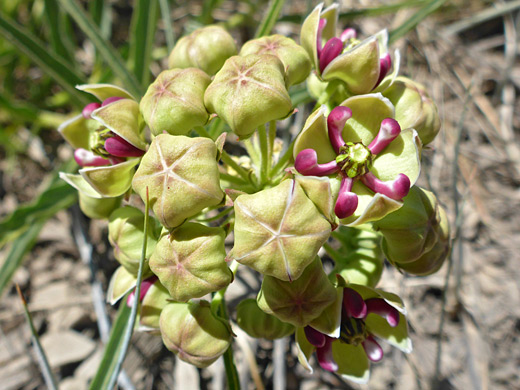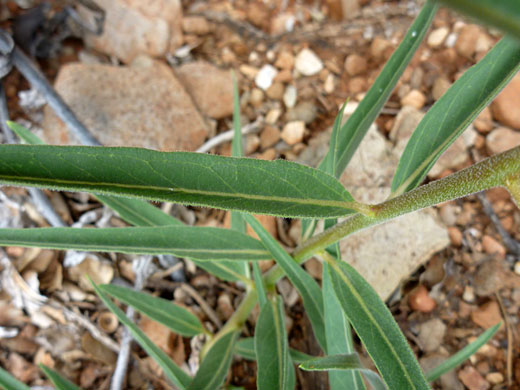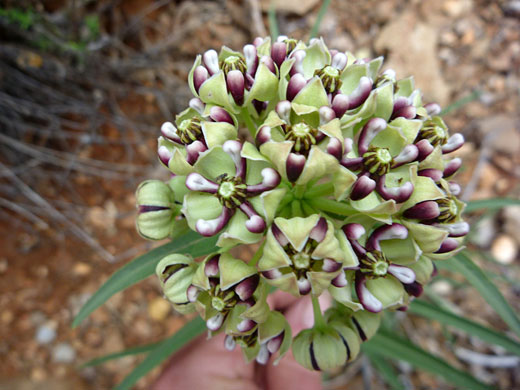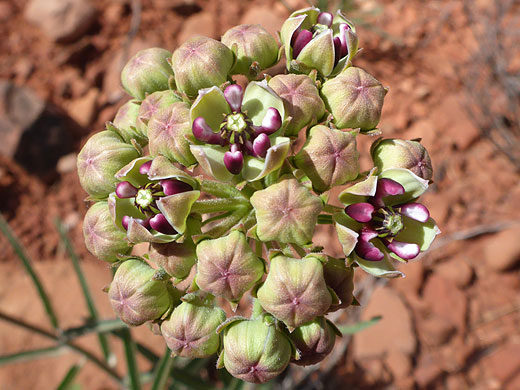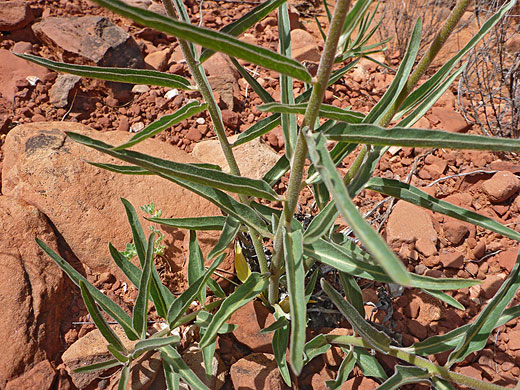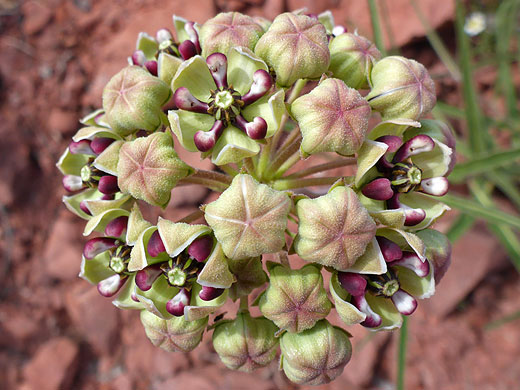Common names:
Spider milkweed, antelope horns
Family:
Scientific name:
Asclepias asperula
Main flower color:
Range:
From the Mojave Desert and east Nevada, east to Texas and the southern Great Plains
Height:
Between 8 and 24 inches
Habitat:
Woodland, desert scrubland, hillsides; to 9,000 feet
Leaves:
Narrowly lanceolate, alternate, up to 6 inches long, on very short stems
Season:
April to August
Leaves of asclepias asperula are narrow, triangular to lance-shaped, and, like the light-green stems, have a covering of fine hairs, including along the margins. They are crossed by a thick, light-colored mid vein and much thinner side veins. Leaves tend to fold upwards from the central vein to varying degrees, and they are held at right angles to the stem.
The inflorescence is a spherical cluster of small flowers, each consisting of five green petals, curving inwards, enclosing a pentagonal structure (the crown) of purple, white-tipped projections around a greenish center, which includes five fused stamens. Clusters are about 3 inches in diameter, and contain around 20 flowers. Plants may produce one stem, or as many as 15, each topped by one cluster. The fruit is a conical pod, occurring in pairs and resembling the horns of an antelope, hence the alternative common name.
The inflorescence is a spherical cluster of small flowers, each consisting of five green petals, curving inwards, enclosing a pentagonal structure (the crown) of purple, white-tipped projections around a greenish center, which includes five fused stamens. Clusters are about 3 inches in diameter, and contain around 20 flowers. Plants may produce one stem, or as many as 15, each topped by one cluster. The fruit is a conical pod, occurring in pairs and resembling the horns of an antelope, hence the alternative common name.
All Contents © Copyright The American Southwest | Comments and Questions | Contribute | Site Map
